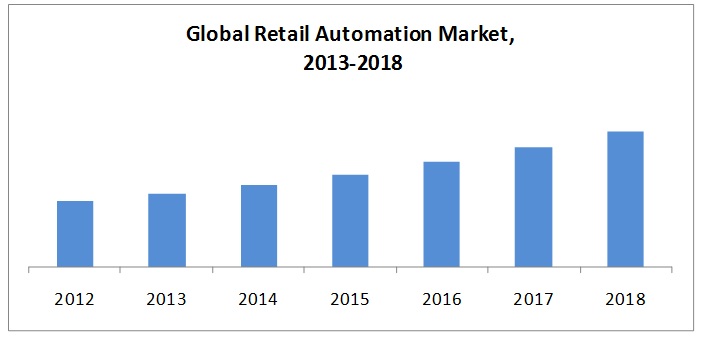Retail stores are resorting with automated machines as the easiest tool to complete various functions. Advanced technology and presence of numerous automated products in the retail automation market are creating better services in the industry. This is also serving as the strongest driver for the global market. Rapidly growing demand for automated products, need to reduce operational costs and growing requirement for improved services are some of the strongest driving factors for the global industry. As a result of all these factors, the industry is poised to witness healthy growth in terms of compound annual growth rate, revenue, trends and business expansions across different parts of the world.
Segmentation in Retail Automation Industry
According to researchers, segmentation provides better insights about the market trends, drivers, challenges and restrains to the existing businesses as well as potential investors in the market. The global retail automation market is segmented on the basis of different products and their demand across various geographic regions. The products segment is sub-segmented into two distinct sections, namely, supply chain and retail point of sale or (PoS). Point of sale is further segmented into products like cash registers, kiosks, barcode readers, self checkout systems, currency counters, bill and receipt printers, PIN pad, contactless card readers, and weight scale and so on. Supply chain segment includes products like scissor lifts, belt conveyors and electric shelf labels. Geographically, the industry is divided into North America, Asia Pacific, Europe and rest of the world.
Forecasting Reports from 2013 to 2018
Growing demand for sophisticated, organized and improved services for shopping, demand for automated products across the world and need for controlling the operational expenses are driving global retail automation market. Automated products are beneficial and demanded by manufacturers, retailers and customers alike, which is working in favor of the global industry. According to the market research reports, the industry is poised to grow at a CAGR of over 13% from 2013 to 2018. During the forecasting period, the market is expected to expand over rapidly developing regions like Asia pacific, Latin America, Middle Eastern countries and Africa. At the aforementioned estimated compound annual growth rate, the industry is aiming to become worth $973.67 billion by the end of 2018.
Currently, the market is majorly dominated by the Americas, which is followed by various European countries like Germany, UK and France. The rest of the world region is the slowest moving region which is gaining pace in the wake of globalization and technological advancements.



